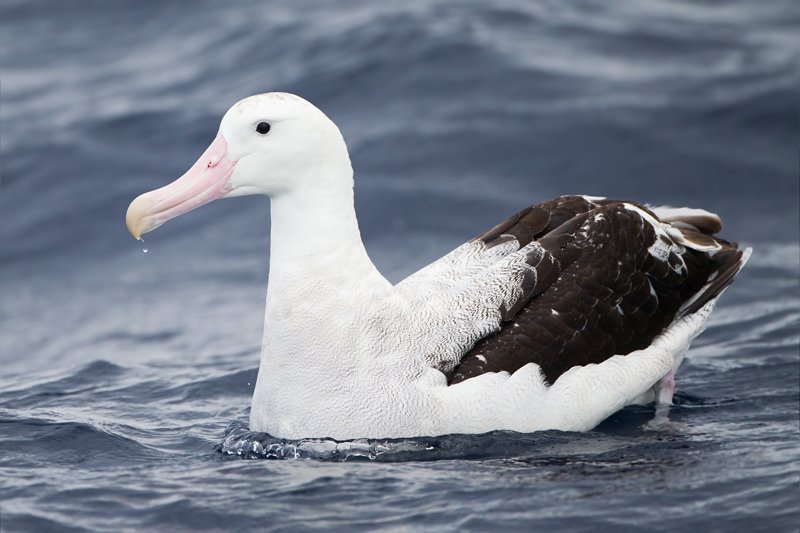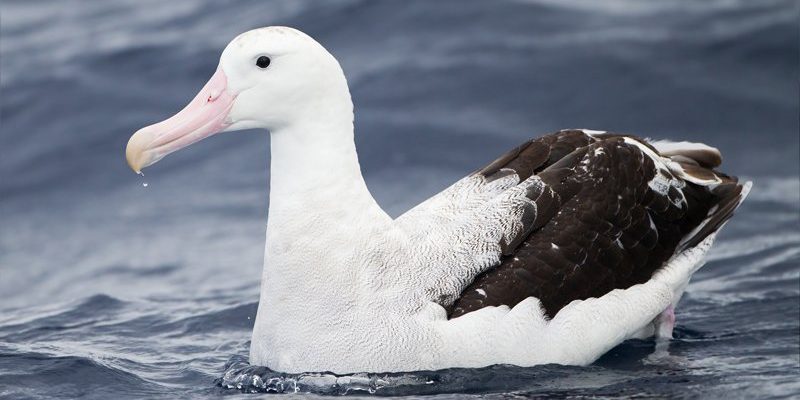
Imagine gliding gracefully over the vast, deep blue ocean, using the wind to carry you effortlessly for miles. This is the everyday life of the albatross, a striking seabird known for its impressive wingspan and incredible flying abilities. With around 21 species, albatrosses can be found soaring above the southern oceans and parts of the North Pacific. Their unique characteristics and fascinating behaviors make them one of the most captivating birds in the world.
One of the most remarkable traits of the albatross is its wingspan, which can reach up to 12 feet in some species. That’s longer than most small cars! Their ability to glide for hours without flapping their wings makes them champions of aerial efficiency. When you’re out on the ocean, spotting an albatross can feel like catching a glimpse of a living legend. They are not just birds; they are symbols of freedom and endurance, navigating the winds and waves with ease.
Physical Characteristics of Albatrosses
Albatrosses are large seabirds with a distinctive appearance. They generally have a long, slender body and long, narrow wings, which allow them to soar gracefully through the air. Their plumage is usually a mix of white and brown or grey, providing excellent camouflage against the ocean backdrop. The size of an albatross varies depending on the species, but they generally range from about 3 to 10 feet in length. This large size is not just for show; it plays a crucial role in their ability to fly long distances.
One fascinating aspect of the albatross is its bill. Unlike many other birds, albatrosses possess a large, hooked bill that can measure up to a foot long! This bill is not just for decoration; it’s an essential tool for feeding. Albatrosses primarily eat squid, fish, and crustaceans, often scavenging from the surface of the water. Their bill allows them to snatch up prey with surprising speed and precision. You might be asking, how do they find their food? Albatrosses have excellent eyesight, enabling them to spot food from great distances while flying high above the ocean.
| Fact | Detail |
| Wingspan | Up to 12 feet (3.6 meters) |
| Weight | 8 to 25 pounds (3.6 to 11.3 kg) |
| Diet | Squid, fish, and crustaceans |
| Habitat | Open oceans and islands |
| Lifespan | Up to 50 years |
Habitat and Distribution
Albatrosses are primarily found in the Southern Hemisphere, although some species venture into the North Pacific. They prefer open oceanic areas, where they can find plenty of food and space to glide. Large colonies often nest on remote islands that are free from land predators. These nesting sites are crucial for their breeding and survival, providing safe spaces for their young chicks to grow. When you think about these birds, picture them diving into the wind above vast stretches of water, effortlessly riding the currents.
One interesting fact is that albatrosses can spend years at sea without returning to land, sometimes traveling thousands of miles to find food. This migratory behavior highlights their incredible adaptability to ocean life. They’re not just wandering aimlessly; they use sophisticated navigation skills, relying on their keen sense of direction and the ability to read the winds and currents. It’s like they have an invisible map guiding them across the globe, showcasing their strong connection to the oceans.
Behavior and Social Structure
Unlike many birds, albatrosses are known for their monogamous relationships, often forming lifelong bonds with a partner. This strong family structure is essential for raising their young. The mating ritual is a beautiful sight, involving synchronized movements and elaborate displays between mates. These courtship dances can take place over several years before they finally lay eggs, demonstrating their commitment to one another.
Once the eggs are laid, both parents share the responsibility of incubating and feeding the chick. This dual parenting approach is vital, as it ensures that the chick is well cared for during its formative months. After hatching, it can take several months for a chick to reach maturity and learn to fly. During this time, parental care remains crucial, with adults bringing food back to the nest.
Threats and Conservation
Sadly, albatross populations face various threats that have resulted in declining numbers. One major issue is bycatch, where albatrosses get accidentally caught on fishing lines while trying to catch fish. This unintentional trapping can lead to injuries or death, severely impacting their populations. Additionally, habitat loss due to human activity, pollution, and climate change further complicate their survival.
Given the serious nature of these threats, conservation efforts have gained momentum. Organizations around the world are working to reduce bycatch through better fishing practices, promoting awareness of these issues, and protecting nesting habitats. One exciting initiative is the establishment of marine protected areas, ensuring that albatrosses have safe and healthy environments to thrive. As we become more aware of these majestic creatures, our efforts to preserve their existence become even more critical.
Albatrosses are truly remarkable birds that embody the spirit of the open ocean. With their vast wingspans and incredible flying abilities, they capture our imagination and inspire awe. These birds play an essential role in the marine ecosystem, and their presence is a testament to the beauty and complexity of nature. By understanding their lives and the challenges they face, we can take meaningful action to ensure their future. After all, the survival of the albatross reflects our commitment to protecting the planet we share.
FAQ
What do albatrosses use their wings for?
Albatrosses use their large wings for gliding across the ocean, allowing them to travel long distances without much effort. Their impressive wingspan enables them to take advantage of wind currents, making it efficient for them to soar and search for food. When flapping is necessary, they do so less frequently, conserving energy during their long flights.
How long can an albatross stay at sea?
Some albatross species can remain at sea for several years without returning to land. They are well-adapted to life on the ocean, navigating vast distances in search of food. During this time, they rely on their excellent eyesight and navigational skills to find prey and avoid dangers like fishing boats.
What is the role of albatrosses in their ecosystem?
Albatrosses play a vital role in the marine ecosystem by helping regulate fish populations through predation. Their foraging habits contribute to the health of oceanic food webs, and they also act as scavengers, cleaning up dead marine life. This ecological contribution is essential for maintaining a balanced environment.
How do albatrosses find their mates?
Albatrosses engage in elaborate courtship displays to attract mates, which can include synchronized dancing and aerial acrobatics. These rituals can take years, as they form strong bonds and establish their partnership. Once a pair has chosen each other, they usually mate for life, showcasing their commitment to one another.
What is the lifespan of an albatross?
Albatrosses have impressive lifespans, often living 30 to 50 years, with some species known to reach even longer. This long life allows them to build strong family ties and contribute to their populations over an extended period. Their longevity also increases the importance of conservation efforts to protect them.
Are albatrosses endangered?
Many albatross species are currently at risk due to threats such as bycatch in fishing gear, habitat loss, and pollution. Conservation organizations are actively working to implement measures to protect these birds, but challenges remain. Awareness and action are crucial to ensure that future generations can appreciate these magnificent seabirds.
Can albatrosses swim?
While albatrosses primarily rely on flying to travel and find food, they can swim if they need to. Often, they prefer to stay on the surface of the water, where they can rest or engage in feeding behaviors. Their large feet are designed for paddling in the water, allowing them to navigate if necessary, but they’re most at home soaring through the skies.
What do albatross chicks eat?
Albatross chicks are fed a diet primarily consisting of regurgitated food brought back by their parents. This may include squid, fish, and other marine life that the adults have caught. Initially, the chick’s diet is mostly liquid, gradually transitioning to solid food as they grow and prepare for independence.
Do albatrosses migrate?
Yes, albatrosses are known for their migratory behavior. They often travel thousands of miles across oceans to find food and breeding grounds. Their migratory patterns depend on the species, with some traveling seasonally while others may remain in one region for extended periods if conditions are favorable.
What adaptations help albatrosses survive in their environment?
Albatrosses have several adaptations that enable them to thrive in the open ocean. Their large wings are designed for gliding, conserving energy over long distances. Additionally, their excellent eyesight helps them spot prey from great heights. They also have specialized salt glands that help them excrete excess salt from seawater, ensuring they stay hydrated.
How do albatrosses communicate?
Albatrosses communicate using a variety of vocalizations, including grunts, honks, and moans, which convey different messages. These sounds are especially important during courtship and to maintain the bond between mates. Body language, such as head bobbing and wing displays, also play a significant role in their social interactions.

